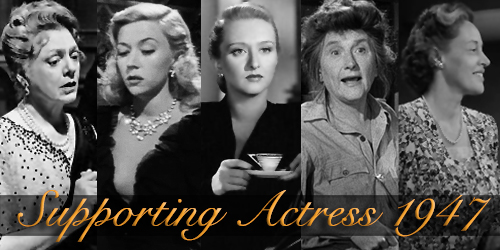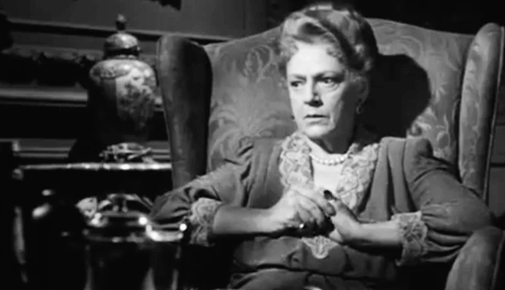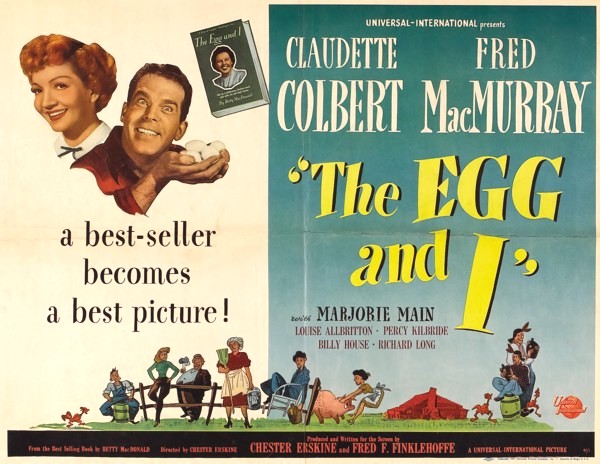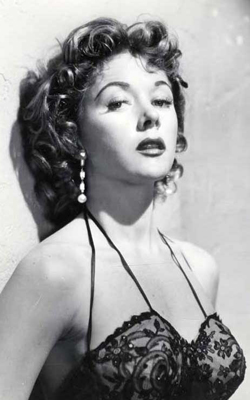 Craig here with Take Three. Today: Gloria Grahame.
Craig here with Take Three. Today: Gloria Grahame.
Take One: The Big Heat (1953)
When you think of Film Noir, you think of hard-boiled anti-heroes in fedoras, smoking, permanently with gun. But in some noirs it’s ladies first. Fritz Lang’s dirty, masterful noir par excellence The Big Heat has a first-rate femme fatale in Grahame’s Debby Marsh. Thank 20th Century Fox for replacement pleasures then: Grahame stepped in when original pick Marilyn Monroe’s fee became too high, giving the the film an extra sprinkling of salty sass. She excelled in each moment, whether heartfelt or hardened; I can only hazard a guess that Monroe might have made Debby’s eventual desperation too pleading. Under Grahame’s control Debby’s desperate dilemma was frenetic and wrenching. Never has the rapid flush of devastation been so well conveyed on screen as when she runs to Glenn Ford’s apartment to beg for cover.
Grahame’s transformation, from carefree nonchalance to scornful grittiness is more readily noticeable after a second viewing of the film. Indeed, The Big Heat deserves two watches for Grahame’s performance alone. She flips drastically in a scene wherein Lee Marvin (as Vince, her criminal beau) throws hot coffee in her face. It occurs off screen and we are withheld the image of her scarred visage until... well, let’s say she gets her revenge in an apt way. But her face, now fuelled with anger and half covered with bandages, tells us everything we need to know about what she’s thinking. It’s a beautifully judged and performance. No wonder Stephen Frears insisted on her influence for his Grifters ladies. Grahame had the film’s best line too. “Hey, that's nice perfume.” Vince says. “Something new,” Debby replies, “it attracts mosquitoes and repels men.”
Take Two: In a Lonely Place (1950)
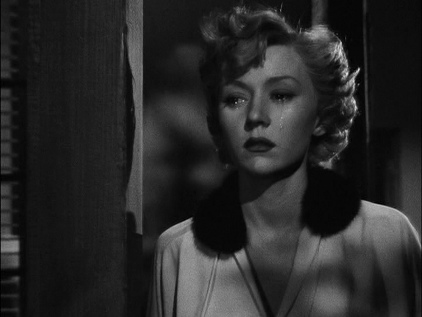
As with The Big Heat, Grahame wasn’t the first choice for Nicholas Ray’s 1950 masterpiece In a Lonely Place. She was third in line to play Laurel Gray. This being a Humphrey Bogart film, the obvious choice at the time would have been Bogart’s wife, Lauren Bacall. But, under contract, Warner Bros. refused to loan Bacall out; Ray, who was married to Grahame (though they subsequently separated during filming) managed to get her cast over Ginger Rogers, too.
Laurel Gray is a struggling actress, living across the courtyard in an adjacent apartment to Dixon Steele (Bogart). In fact, this is how she comes to be embroiled in his affairs and ends up falling in love with him. We see her go from cool, aloof social gal to a woman in dire need of a supportive shoulder to spill her woes to; "is-he-isn’t-he a killer?" conundrums are tough to sort out. Grahame takes obvious pleasure in the spiky moments of dialogue between herself and Bogart, leaving the air in recently-vacated spaces pungent with tease. Referring to Bogart’s face she says
I said I liked it. I didn’t say I wanted to kiss it.
Off she walks, daring us to scuttle after her.
Her performance gives way to darker edges as the plot sinks further into muddy emotional territory, but throughout the entire film Grahame is on full actressing alert. Her last lines find their way out of her conscience at the close. “I lived a few weeks while you loved me...” She adds a sad “Goodbye Dix” at the end. In a lonely place, indeed.
Take Three: Crossfire (1947)
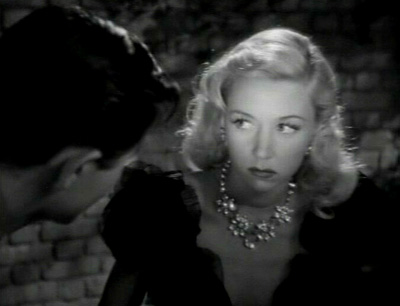
Grahame’s is the first name after the title in Crossfire, but she shares the screen caption with four others, a trio of Roberts: Mitchum, Young and Ryan, aptly sounding like a private detective firm. The Roberts³ head this 1947 noir from Edward Dmytryk. Grahame only really has two scenes in the film. But what a pair of scenes. Each is nearly ten minutes long and crucial to the plot. She dominates both with a characteristically captivating allure, leaving us wanting at least another half dozen more. We first see her emerge from a blurred dissolve: she enters the film as she enters the recollection of Ryan’s soldier. She’s in the Red Dragon, the “stinking gin mill” out of which she procures her men folk. She’s Ginny “because [she’s] from Virginia”, lit by cinematographer J. Roy Hunt as a seductive blonde vapour, only her showy attributes are spotlit: the hard glint in her eyes matches the gleam from her bling.
It’s her second scene, much later in the film, where she gives good talk to match the face. It’s surely the scene that earned her the Supporting Actress Oscar nomination (she would win the award in The Bad and the Beautiful five years later). The shimmy has dimmed - she’s dowdy in a housedress - but she's no less captivating. Here we see another side to Grahame, a defiant irritation, as Ginny is questioned on Ryan’s whereabouts the night of the anti-Semitic murder that propels the narrative. Dmytryk’s camera searches her for the answers the plot demands. Grahame’s greatness in the role becomes all the more evident because of this scrutiny.
Three more key films for the taking: The Bad and the Beautiful (1952), Oklahoma! (1955), Human Desire (1954)
 Saturday, May 30, 2020 at 1:00PM
Saturday, May 30, 2020 at 1:00PM 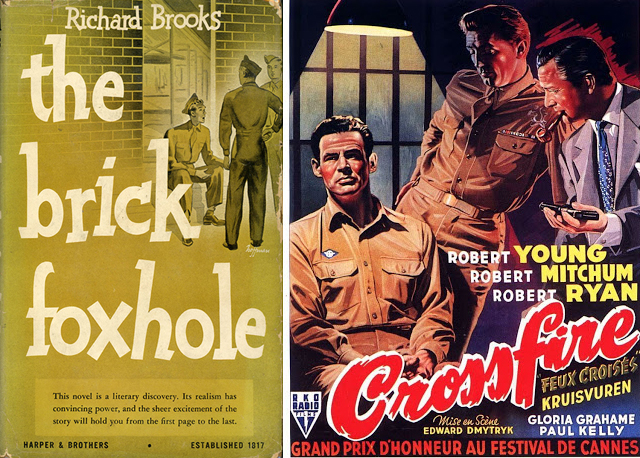
 Crossfire,
Crossfire,  Oscars (40s),
Oscars (40s),  Podcast,
Podcast,  Smackdown
Smackdown 


